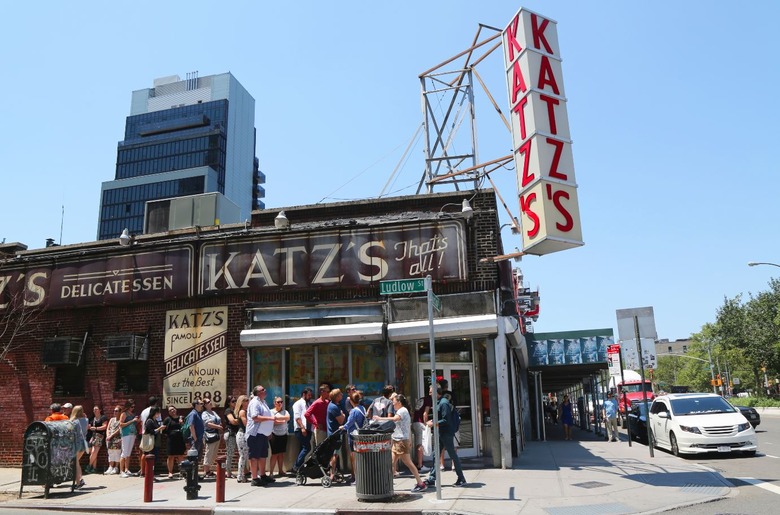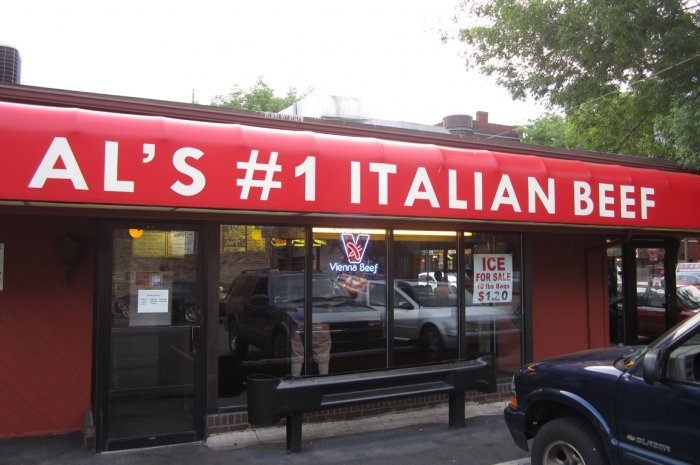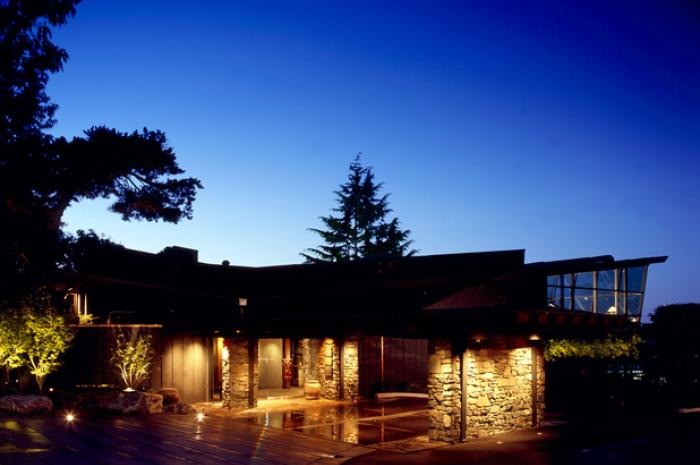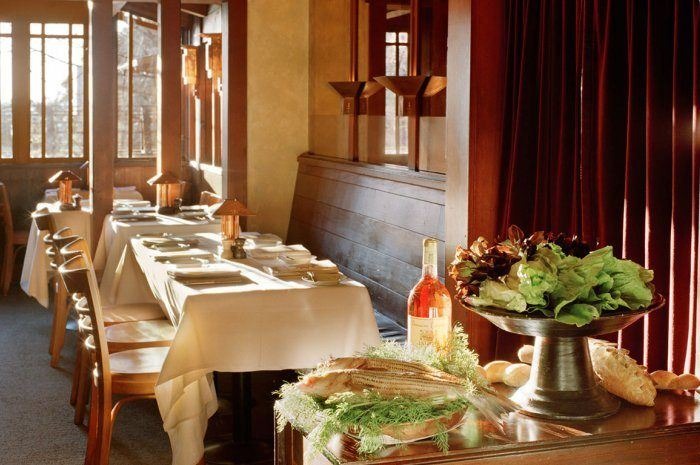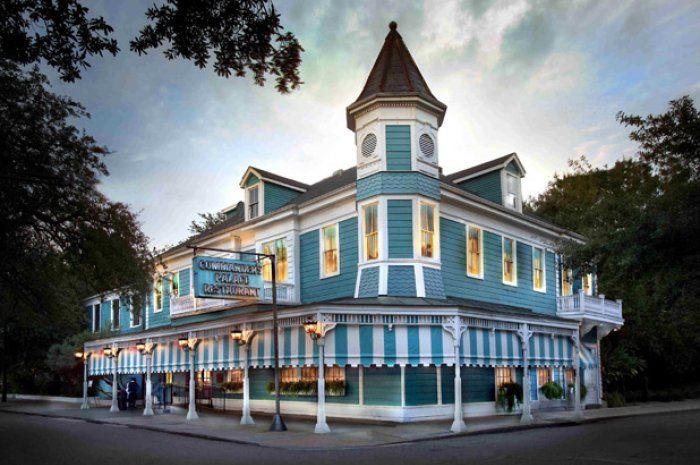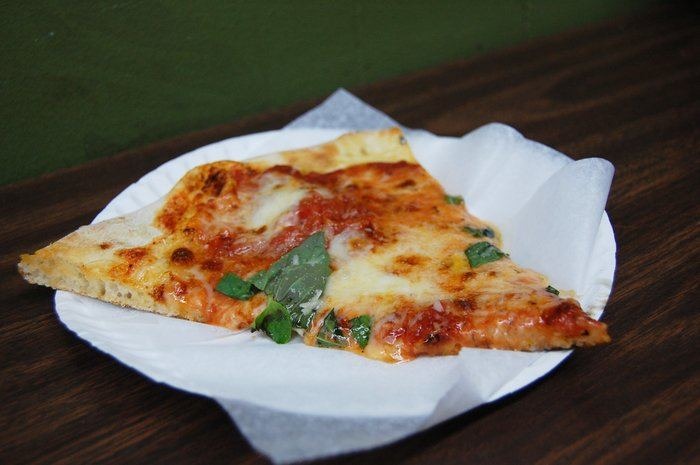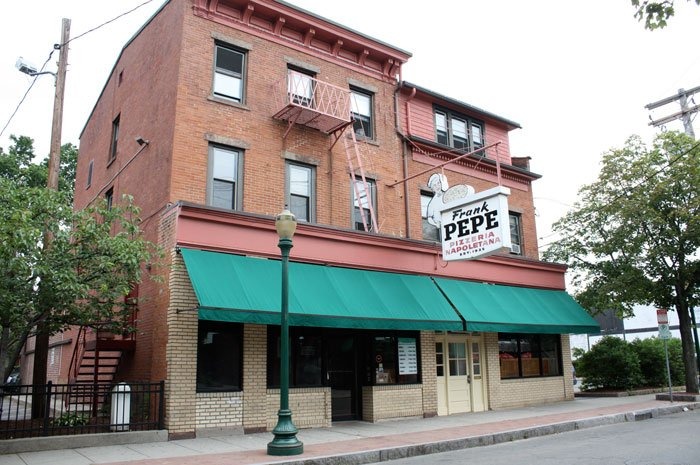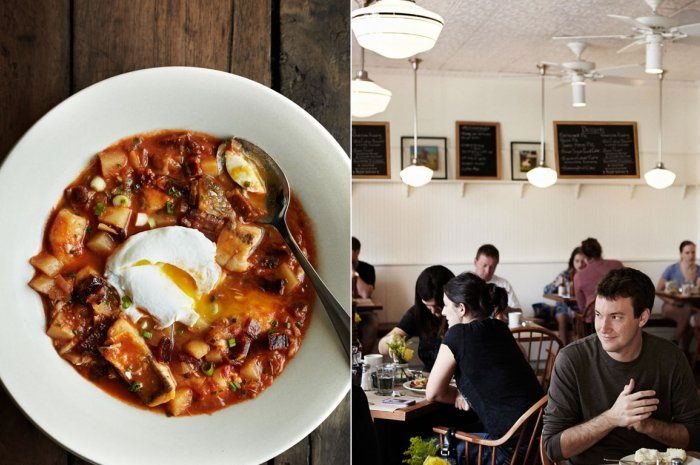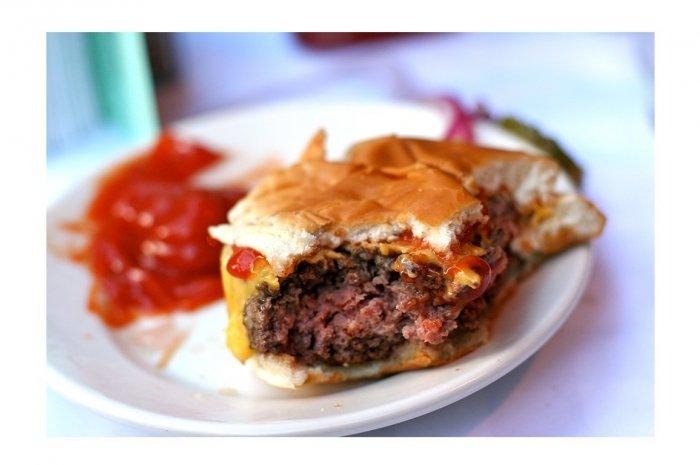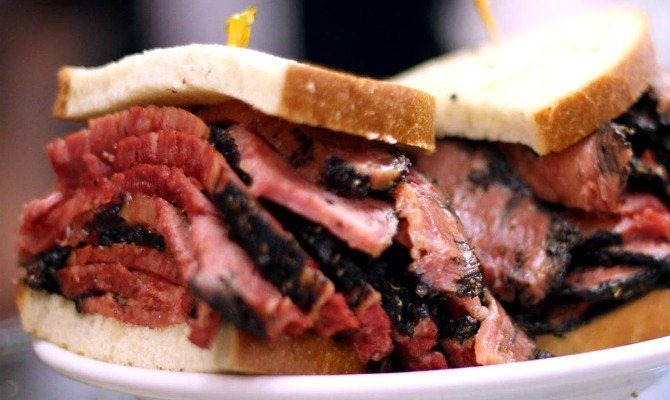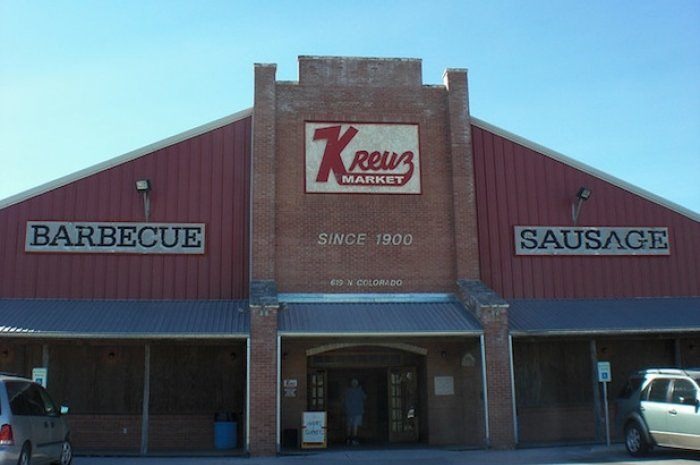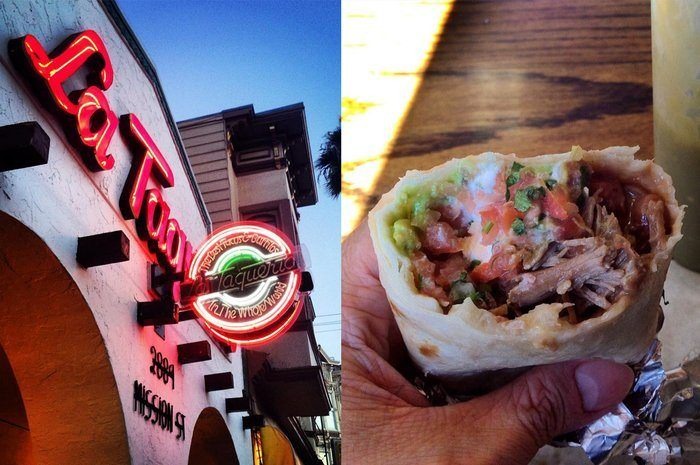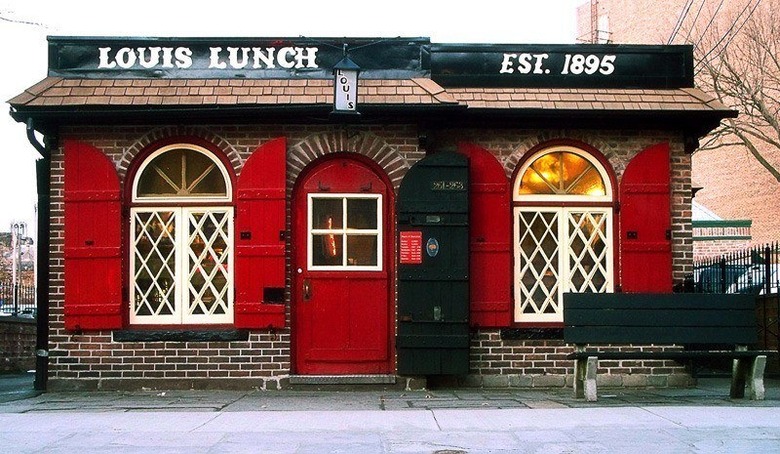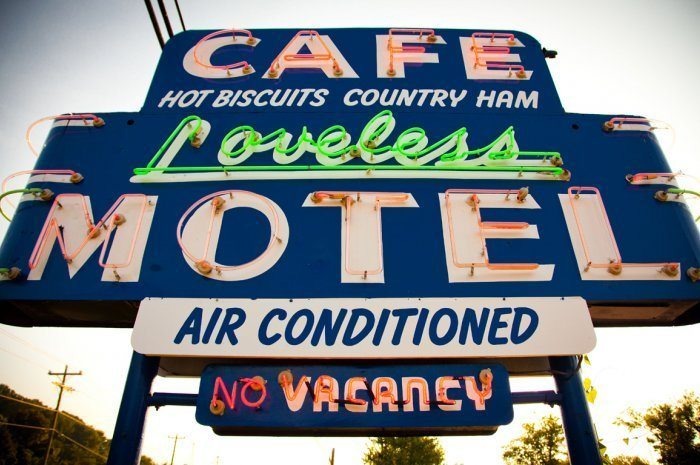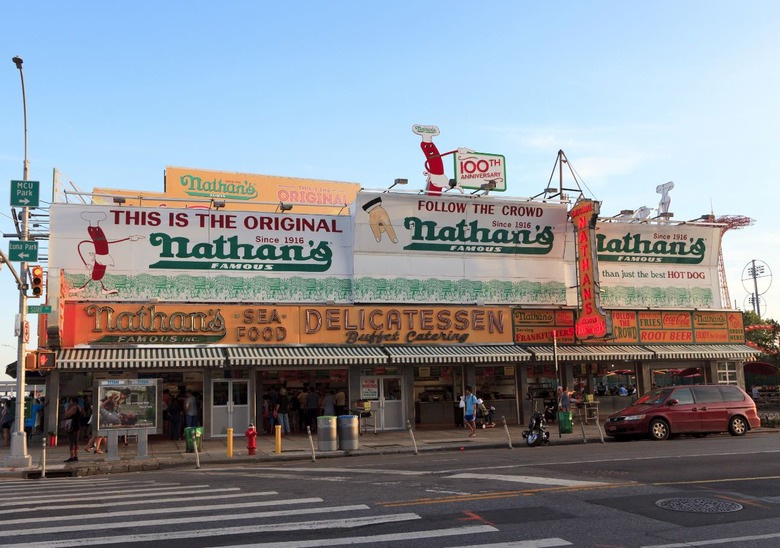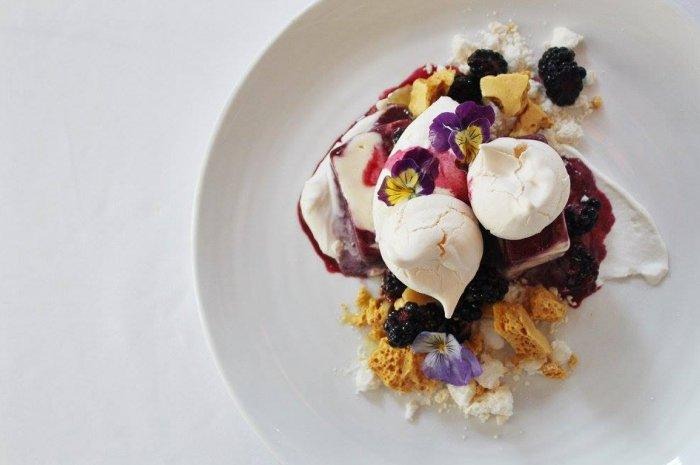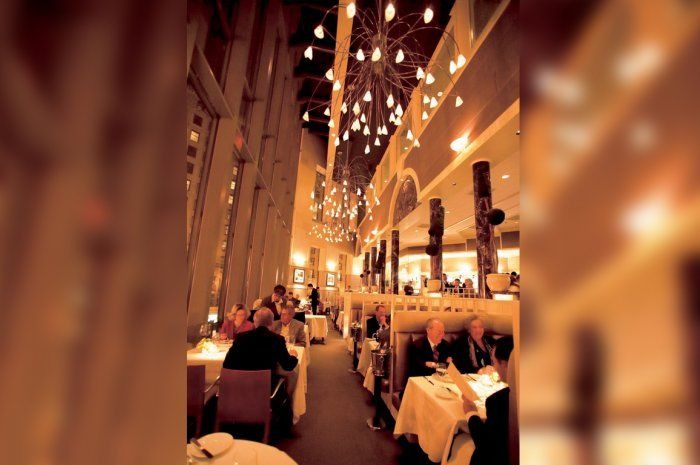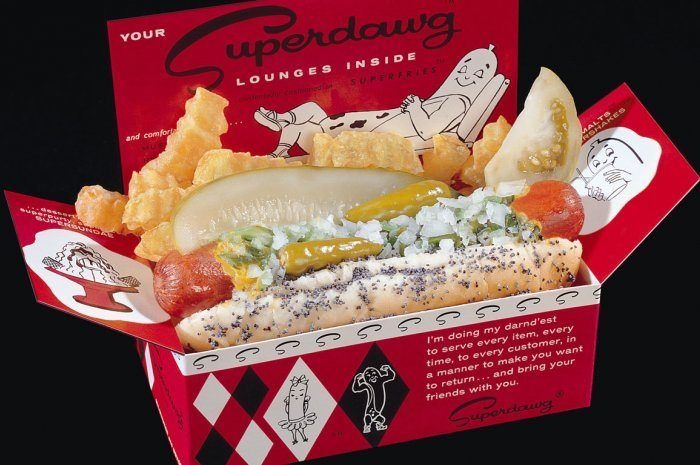Resolve To Eat At These 20 Legendary Restaurants In 2017
Every city in America is home to its fair share of restaurants that locals deem legendary, ones that have stood the test of time and still serve food that's really, really good. But some restaurants rise above local renown and become beloved national treasures, iconic institutions that should be on everyone's bucket list. From the super-cheap to the outrageously expensive, we've rounded up 20 restaurants that you should definitely visit if you call yourself a food-lover.
Al's #1 Italian Beef, Chicago
Way back in 1939, Al's #1 Italian Beef started as a small food stand, later morphing into the iconic Chicago franchise, with 11 different locations in Chicago and shops in Las Vegas, Dallas, and Dubai.
During the Depression, when food was scarce, owner Al Ferrari and his family began slicing meat very thin and placing it on small fresh loaves of Italian bread, accidentally creating a now-legendary style of sandwich.
The essential choice here is the Italian beef sandwich. The beef sirloin is dry-roasted in a secret recipe blend, thinly sliced, put inside its loaf, and then dunked in Al's signature "gravy" (commonly referred to as au jus). Customers can choose how much or little broth to add, but Al's encourages customers to get their sandwiches wet and enjoy the savory sauce. When topped with their signature giardiniera, a tart and spicy vegetable blend, Al's Italian beef is quite possibly the greatest sandwich you'll ever eat.
Canlis, Seattle
Canlis is a true Pacific Northwest landmark. It's been open since 1950, serving fresh, seasonal dishes that are more polished than cutting-edge in a rustic-modern space whose use of native wood and stone evokes forests and streams. Canlis was revolutionary when it opened due to its stunning architecture (Roland Terry and Pete Wimberley collaborated on an original design meant to echo Frank Lloyd Wright) and trailblazing menu of upscale Northwest cuisine (which founder Peter Canlis essentially invented), and it's still blazing new trails while keeping the classics, such as the famous Canlis salad (romaine, bacon, mint, oregano, and Romano with a dressing of lemon, olive oil, and coddled egg), on the menu. Note that current co-owners Brian and Mark Canlis try to maintain the restaurant's reputation as Seattle's dressiest restaurant by requesting that men wear a suit or a sport coat.
Chez Panisse, Berkeley, Calif.
Celebrating more than 40 years in business, Chez Panisse is still going strong even after a devastating fire shut it down for three months in 2013. Sometimes it's hard to remember just how instrumental this place was in changing the American food scene after opening in 1971. Before Chez Panisse, practically nobody in America served only fresh, local foods and wrote daily menus based around the season. Alice Waters, an organic-living pioneer, is also the founder of The Edible Schoolyard Project, a foundation that brings healthy breakfasts and lunches to schools across the nation. It has become fashionable to criticize this culinary icon as irrelevant, but the truth is that her restaurant's food is still superb, both in the one-menu-a-night downstairs restaurant where the dishes tilt toward Italy and Provence — think white sea bass carpaccio with blood orange vinaigrette and shaved fennel, followed by spit-roasted pork shoulder with salmoriglio sauce and cannellini beans — and the lively, diversified upstairs Café.
Commander's Palace, New Orleans
A slice of New Orleans dining history — it opened in 1880 — this culinary landmark has long been collecting accolades for everything from its service to its wine list and of course its "haute Creole" cuisine. Two of its alumni, it might be noted, are Paul Prudhomme and Emeril Lagasse — but with chef Tory McPhail at the ovens for over a decade, Commander's Palace is still going strong. Come hungry and ready for such dishes as the sous-vide five-hour egg with roasted shiitakes, spiced truffle, and chicken cracklins; cast-iron seared foie gras with Bocage honeycomb, cornbread, pickled strawberries, and candied pistachios; or tangerine sorbet with a vanilla pastry cream, candied blood oranges, banana olive oil cake, tarragon, and lava salt.
Di Fara, Brooklyn
Domenico DeMarco is a local celebrity, having owned and operated Di Fara since 1964. Dom cooks both New York- and Sicilian-style pizza for hungry New Yorkers and tourists willing to wait in long lines and brave the free-for-all that is the Di Fara counter experience. Yes, you're better off getting a whole pie than shelling out for the $5 slice. Yes, it's a trek, and sure, Dom goes through periods when the underside of the pizza can tend toward overdone, but when he's on, Di Fara can make a very strong case for being America's best pizza. Dom has slowed down in recent years (his sons can sometimes be found manning the ovens instead of him), but seeing the man in action has become a quintessential New York experience.
Doe’s Eat Place, Greenville, Miss.
Founded by Dominick "Doe" Signa and his wife, Marnie, in 1941, this Mississippi legend got its start as a honky tonk that sold great tamales.
Over time, the honky tonk gave way to a full-service restaurant, but the tamales are still legendary. Even more legendary are the steaks. Doe's might be the most downscale and shabby steakhouse in America (guests enter through the kitchen), but that's all a part of the charm; the restaurant is even listed on the National Register of Historic Places. It's not a gimmick, however: These enormous steaks are rubbed with proprietary seasoning, cooked under a ripping-hot broiler, and served with a ladle of rich jus. Doe's isn't just a restaurant — it's an experience.
Frank Pepe Pizzeria Napoletana, New Haven, Conn.
If you want to discuss the loaded topic of America's best pizza with any authority, you have to make a pilgrimage to this legendary New Haven pizzeria — whose "clam pie" has taken first place in The Daily Meal's ranking of The 101 Best Pizzas in America for several years.
Frank Pepe opened his doors in New Haven, Connecticut's Wooster Square in 1925, offering classic Neapolitan-style pizza. After immigrating to the United States in 1909 at the age of 16 from Italy, Pepe took odd jobs before opening his restaurant. Since its inception, Pepe's has opened an additional seven locations. What should you order at this checklist destination? Two words: clam pie ("No muzz!"). This is a Northeastern pizza genre unto its own, and Pepe's is the best of them all — freshly shucked, briny littleneck clams; an intense dose of garlic; olive oil; oregano; and grated Parmigiano-Reggiano atop a charcoal-colored crust. The advanced move? Clam pie with bacon. Just expect to wait in line if you get there after 11:30 a.m. on a weekend.
Hominy Grill, Charleston, S.C.
Unpretentious, classic Southern dishes are key at downtown Charleston's Hominy Grill, where chef–owner Robert Stehling serves up stone-ground grits, house-made sausages, and fried green tomatoes in what was once a barbershop.
The classic 1950s diner signage, extra-comfortable wooden chairs, and seasonal desserts like persimmon pudding embody everything comfort food stands for. The restaurant's signature smoked pork and chicken are roasted over a brick pit. The chicken is served with vinegar-based white sauce and the pork has a vinegar-based tomato sauce. The restaurant really hits its stride during the daytime, though – look no further than the legendary Charleston Nasty Biscuit, a hunk of boneless fried chicken sandwiched inside a perfect biscuit and doused with creamy sausage gravy.
JG Melon, New York City
According to legend, burgermeister George Motz wanted to include J.G. Melon's definitive bar burger in the first edition of his book Hamburger America, but nobody at the place would return his calls — maybe because they were too busy actually turning out the darn things. The burger is simple and classic: a healthy slab of ground beef (the exact formula is kept a secret) sizzled on the griddle, served draped with American cheese on a toasted bun, with pickles and red onions on the side. And while the burger is great, the restaurant itself – a classic old New York bar if ever there was one – is a perfect meeting spot.
Katz's Delicatessen, New York
Katz's Deli, on New York's Lower East Side, is a New York institution. Its corned beef and pastrami, made on-premises and sliced to order, are legendary, and the simple act of taking your ticket, standing in line, bantering with the counterman, and finding a table has become as New York an exercise as, well, eating a hot pastrami sandwich.
It opened its doors in 1888, originally serving many of the immigrant families on the Lower East Side who landed in New York. Word to the wise: You're doing yourself a great disservice if you leave without sampling the corned beef and pastrami on rye with some deli mustard. Corned beef is brined and steamed, pastrami is cured and smoked, and nobody does it better. Receiving a small plate with a taste of what's to come from the counterman as he hand-slices your meat is one of those can't-miss New York culinary experiences, surpassed only by the first bite of your sandwich. Katz's isn't just a restaurant, it's an experience. And more so than any other deli in New York (especially that touristy one near Times Square), no visit to the city is complete without a trip to Katz's. While a towering high-rise is currently under construction next-door, the sale of the restaurant's air rights by 29 year-old owner Jake Dell have guaranteed that thankfully this New York legend won't be going anywhere anytime soon.
Kreuz Market, Lockhart, Texas
Kreuz Market, originally a meat market and a grocery store, was founded by Charles Kreuz (pronounced "krites" in these parts) in 1900.
Like most markets at the time, it pit-barbecued the better cuts of meat and made sausage out of the lesser cuts. Customers bought barbecue, sausage, and garnishes like bread, crackers, pickles, onions, tomatoes, and cheese from the grocery store, eating it straight off butcher paper. The business was passed on to Kreuz's sons, who ran it until 1948. That year, Edgar A. "Smitty" Schmidt bought the place, phased out the groceries, but continued to serve the same barbecue and sausage. Cabbage knives were chained to the tables so that customers could cut their meat (but not take home the cutlery). Schmidt's son, Rick Schmidt, bought the business, and when he and his sister Nina went their separate ways, he moved, along with the Kreuz name, to a cavernous new 560-seat location in 1999. Nina kept the old location and named it Smitty's. Today, Kreuz boasts eight 16-foot pits for barbecuing meat (it cooks for four to six hours, a short period by industry standards) and for grilling approximately 15,000 rings of sausage each week. The original menu has expanded to include baked beans, German potato salad, sauerkraut, and dipped ice cream.
La Taquería, San Francisco
When it comes to leaders of a culinary genre, there are few restaurants in America with greater gravitas for their respective focus than San Francisco's La Taquería has for tacos.
That challenges it, and its tacos (carnitas among them, quite arguably the best), with quite a reputation to live up to. Just one of the Mission's casual Mexican joints, La Taquería does things the way they should be done: fresh.
Louis Lunch, New Haven, Conn.
A conversation about Louis' Lunch is never simple. Is it the birthplace of the hamburger? Supposedly, one day in 1900, a gentleman hurriedly told proprietor Louis Lassen "he was in a rush and wanted something he could eat on the run," resulting in a blend of ground steak trimmings between two slices of toast, with which the gentleman was sent on his way. But was this a "burger," or was it a "sandwich" — because it wasn't a ground-beef patty on some form of yeast bun? Sandwich, hamburger, whatever. So what do you get at Louis'? A flame-broiled burger made in a vertical hinged-steel wire gridiron that cooks the burgers on both sides at the same time; a hamburger sandwich supposedly made from a blend of five cuts of ground steak. If you want condiments, you'll have to ask. Otherwise, all you'll get is cheese, tomato, and onion. No mustard, ketchup, or mayo. But do you really need all that? You can practically taste the nostalgia. And that never disappoints.
Loveless Cafe, Nashville
Loveless Cafe, named after founders Lon and Annie Loveless, has an ironic name. Not only is their fried chicken one of the city's most beloved dishes, but a lot of love goes into their food — and has for over 60 years. The fried chicken recipe, which has remained unchanged since 1951, uses self-rising flour and a special house blend of spices. Other famous items from the Loveless Cafe menu include Kentucky Bourbon Peach Shortcake and the Bee Sting Moonshine Cocktail.
Mi Tierra, San Antonio
No conversation about Mexican cuisine in San Antonio is complete without a mention of Mi Tierra, in business since 1941. Bedecked with Christmas lights and open 24 hours a day, it's renowned for its fajita platters, enchiladas, quesadillas, and more, and is the rare restaurant that's loaded with just as many tourists as locals. The flour-tortilla tacos are possibly the best in town — especially the ones filled with carnitas Michoacán: pieces of pork marinated in orange juice and spices, perfectly fried and presented with guacamole, pico de gallo, and beans. While it is the gold standard for Tex-Mex, its traditional Mexican fare is outstanding too. Don't miss the cabrito or the menudo, a tripe soup that's the ultimate hangover-buster. Make sure you don't leave without stocking up on traditional pan dulce, or sweet Mexican bread, either.
Nathan’s Famous, Coney Island, Brooklyn, N.Y.
The most famous hot dog stand in the country, and still one of the best. Founded by Polish immigrant Nathan Handwerker in 1916, Nathan's didn't just rely on a quality product (the hot dog recipe was his wife Ida's); its founder was also a shrewd businessman. He sold his franks for just 5 cents, making them the cheapest around, and reportedly hired actors to dress as doctors and eat there in order to convince folks that they were safe to eat. The business took off, and today there are more than 40,000 outlets selling Nathan's hot dogs.
A trip to the original stand in Brooklyn's Coney Island is a pilgrimage that everyone should make at least once. Stand in the same line that millions of others have over the years, place your order, and snap into the perfect embodiment of a summer day: the sea, the boardwalk, and an original Nathan's hot dog. There's nothing else like it.
Prince's Hot Chicken Shack, Nashville
Like fried chicken? Then no trip to Nashville should be complete without a trip to Prince's Hot Chicken Shack, a homespun restaurant started by William and Thornton Prince more than 60 years ago that serves the Platonic ideal of Nashville-style fried chicken, known for its spiciness.
There's only one thing to decide: Do you want your chicken mild, medium, hot, or extra hot? If the name of the restaurant doesn't warn you, even the mild is fairly spicy, so be careful. Served with white bread and pickle coins, the chicken itself is crispy, crunchy, and fall-off-the-bone tender. A trip to Prince's is one you're not likely to forget.
Spago, Los Angeles
The more elaborate but immediate descendant of the original, groundbreaking Spago remains the flagship of the ever-growing Wolfgang Puck empire. Yes, it's full of glamour and glitz, but it nevertheless remains a place where food is taken very seriously. The famous Spago pizzas are available only for lunch (with Puck's smoked-salmon "Jewish pizza" also served at the bar), but it's almost a shame to waste your appetite on them anyway (almost), given all the first-rate modern Californian–international fare cooked here under the direction of one of the most underrated chefs in America, executive chef Lee Hefter. Veal filet mignon tartare with smoked mascarpone, Dungeness crab risotto, and roasted half Jidori chicken with goat cheese, black truffles, and Yukon potato purée are examples of Hefter's fare.
Spiaggia, Chicago
Decades before the likes of Mario Batali and Michael White reimagined fine Italian dining, Tony Mantuano taught Chicagoans how to enjoy refined Italian fare at Spiaggia ("beach" in Italian). Mantuano has won countless accolades, including the 2005 James Beard Award for Best Chef in the Midwest, and was named Best Italian Restaurant in Chicago by The Daily Meal. Reopening after a redesign in 2014 (its first since 1999), the restaurant has 50 percent more seats with views, a new lounge, and a floor-to-ceiling glass-enclosed, temperature-controlled wine room showcasing 1,700 of Spiaggia's nearly 5,000 bottles. The new restaurant menu follows the traditional Italian courses of antipasto, pasta, secondi, and dessert, but with almost entirely new dishes (the potato gnocchi with ricotta did make the transition). One thing that hasn't changed is Spiaggia's ability to delight diners. Much of that can be credited to Mantuano and chef de cuisine Joe Flamm, who serves mouthwatering fare like ravioli with lobster, smoked trout roe, and tarragon; 45-day dry-aged rib eye with espresso hollandaise and bottarga; foie gras torchon with blueberry and black walnut; and their famed gnocchi with black truffle, ricotta, and Parmigiano-Reggiano. A six-course tasting menu is also available, for $125.
Superdawg, Chicago
Topped by what has to be some of America's best signage — a flexing hot dog showing off his muscles to a winking wiener girl — Superdawg has been an institution on Milwaukee Avenue across from Caldwell Woods since Maurie Berman opened it in 1948. The recently returned G.I. designed the building, devised his own secret recipe, and set up a drive-in at what was then the end of the streetcar line. He planned to sell 32-cent Superdawg sandwiches to "swimming families and cruisin' teens" for a few months during the summer to help put him through school at Northwestern. In 1950, Maurie passed the CPA exam, but he and wife Flaurie decided to keep operating Superdawg and to open year-round. The family-owned, working drive-in still serves superior pure beef dogs, "the loveliest, juiciest creation of pure beef hot dog (no pork, no veal, no cereal, no filler) formally dressed with all the trimmings: golden mustard, tangy piccalilli, kosher dill pickle, chopped Spanish onions, and a memorable hot pepper." Sadly, Maurie passed away in May 2015 at age 89, but the family-run operation is still going strong: Maurie's seven-year-old great-granddaughter recently worked her first shift there.
